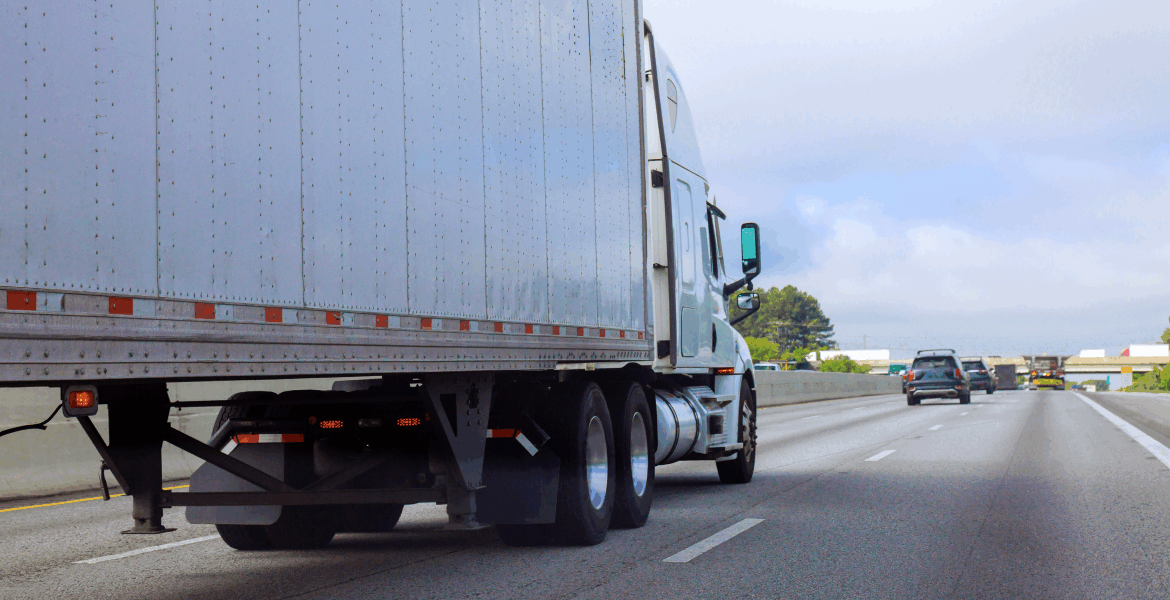Why safety scores matter more than ever
In today’s world of digital compliance and tight delivery windows, fleet safety scores do more than influence inspections—they define operational success. For fleet managers, optimizing these scores can unlock faster trips, reduced delays, and fewer inspection interruptions. The key? Leveraging mobile bypass technology.
The connection to bypass and safety scores
Every time a truck approaches a weigh station, the decision to pull in or bypass is driven by safety data. A strong Inspection Selection System (ISS) score doesn’t just reflect well on your fleet—it opens the door to more bypass opportunities. That’s where the PrePass app plays a vital role.
Understanding how mobile bypass works
Skip the station, not the standards
With mobile bypass technology, eligible drivers receive in-cab notifications when they can legally and safely skip weigh stations. These decisions are backed by credentials, safety history, and inspection data—all verified on-the-go.
The PrePass mobile app brings bypass functionality to smartphones and tablets. It helps fleets automate weigh station decisions without needing transponders, cutting down on hardware headaches while maximizing efficiency.
Why more bypasses mean better operations
Fewer inspections, fewer disruptions
The fewer inspection stops your fleet has to make, the smoother your routes become. Inspections—especially random or unnecessary ones—interrupt schedules and create stress for drivers.
Drivers appreciate knowing their good driving habits and clean records are rewarded. More bypasses signal trust in their professionalism and encourage continued focus on safety.
By reducing inspections, admin staff deal with fewer reports, violations, and compliance follow-ups. This saves time and reduces the chances of regulatory missteps.
How safety scores are calculated
What goes into an ISS score?
The Federal Motor Carrier Safety Administration (FMCSA) uses multiple data sources:
- Inspection results
- Crash history
- Violation severity
- Out-of-service rates
These are used to generate an ISS score that determines whether a vehicle is pulled in or allowed to bypass.
Consistency is key
A single violation can impact your score—but consistent safety across your fleet helps build a stronger ISS rating over time, leading to more bypass opportunities.
Common ways fleets hurt their scores
Neglecting pre-trip inspections
Skipping pre-trip checks may save time, but it increases the chance of being cited for equipment violations that tank your score.
Driver behavior directly impacts safety data. Without regular training, bad habits creep in—leading to higher inspection failure rates.
Many fleets struggle with fragmented records. PrePass helps unify this information, providing centralized insights and ensuring nothing gets missed.
Why mobile bypass supports score improvement
Instant feedback loops
Drivers who bypass frequently see the results of their safe habits. This builds a positive feedback loop that reinforces compliance-focused behavior.
PrePass highlights which vehicles and drivers are earning bypasses. Fleets can use this data to build internal rewards systems and train others to follow suit.
Automating bypass decisions means fewer human errors, missed paperwork, or misclassified inspections—all of which contribute to cleaner safety records.
PrePass vs. traditional weigh station processes
| Feature | Traditional Process | PrePass Mobile Bypass |
| Decision Speed | Manual, on-site | Automatic, pre-arrival |
| Equipment | Scale, booth, officer | Smartphone/tablet |
| Delay Time | 10–30 mins | 0 mins (if bypassed) |
| ISS Score Use | Variable | Primary basis for bypass |
| Data Visibility | Fragmented | Centralized, accessible |
How bypass technology supports compliance
Automated logs reduce human error
When bypasses and inspection statuses are recorded automatically, it’s easier to respond to audits and stay in line with FMCSA requirements.
By focusing on score improvement, fleets build a stronger culture around safety—not just compliance for compliance’s sake.
With reliable bypass rates and fewer unexpected delays, dispatch and operations teams can plan tighter routes and meet customer demands more confidently.
The future of compliance is mobile
Flexibility without compromise
PrePass’s mobile-first design allows fleets to scale without needing to install hardware in every truck—reducing costs while increasing adoption.
Every bypass decision is tracked, creating valuable data for compliance managers to identify trends, outliers, and opportunities.
Fleets can onboard the PrePass app within days. Many see measurable improvements in bypass rates and safety scores within the first two billing cycles.
Conclusion: safety and speed can go hand in hand
You don’t have to choose between compliance and efficiency. Mobile bypass with PrePass empowers fleets to reduce inspections, improve safety scores, and support drivers—all without slowing down operations.
To see how PrePass can help your fleet bypass smarter and operate safer, visit PrePass Bypass.
FAQs
What’s the relationship between bypassing and safety scores?
The better your ISS score, the more likely your vehicles will be allowed to bypass weigh stations. PrePass uses this score to automate decisions.
How does PrePass improve our ISS score?
By helping reduce unnecessary inspections and creating visibility into violations and performance across your fleet, PrePass supports proactive improvements.
Is hardware required for PrePass?
Nope. The mobile app works on most smartphones and tablets, making it easier for fleets to adopt without additional hardware.
What happens if a driver isn’t eligible for a bypass?
The app notifies them to pull in. The system ensures full compliance with DOT regulations.
How soon can I see safety improvements with PrePass?
Many fleets report better inspection outcomes and improved bypass rates within 30–60 days of rollout.
Can PrePass integrate with my other compliance tools?
Yes. It integrates with many fleet management and safety software systems to centralize reporting and analytics.
